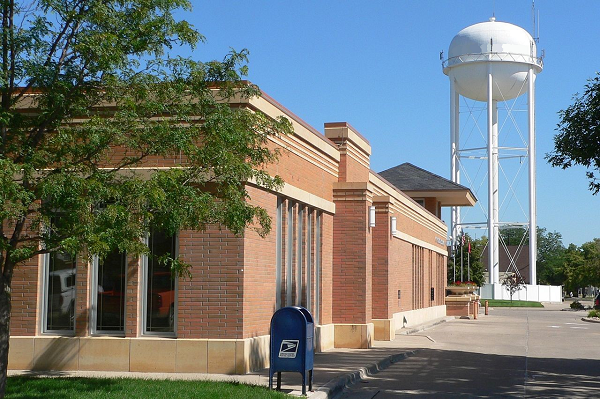Small communities pay high costs for clean water

The amount of nitrate in the groundwater is monitored by several agencies throughout Nebraska. The Safe Drinking Water Act sets limits on the level of nitrate allowed in drinking water at 10 parts per million (ppm) to ensure that the water is safe for human consumption.
But nitrates in the groundwater are also costly.
In Nebraska, 85% of our citizens rely on drinking water pumped from the ground[3]. When a community's public drinking water supply is affected by high nitrate levels that exceed 10 ppm, it can cost hundreds of thousands - even millions - of dollars to fix.
All public water systems are charged with monitoring for the presence of nitrate. A system is out of compliance when nitrate levels exceed 10 ppm. A system is issued an Administrative Order to correct a nitrate contamination problem if two violations are issued within a consecutive three-quarter period.
Nitrate can enter the groundwater when there is excess nitrogen fertilization and excess water application (irrigation or rain). The biggest source of nitrate contamination in the groundwater in Nebraska is from commercial fertilizer on irrigated corn fields[1]. Over years, the nitrate has seeped into the soil and into the groundwater below.
When a public water supply well gets contaminated with nitrates above safe levels, the state requires the community to come up with a solution, such as purchasing new land where they can drill a new well, installing a treatment system or laying pipe to connect to another community's water system. While some communities self-fund nitrate mitigation drinking water projects, other communities rely on low-interest loans and grants from the state and federal government.
Here are a few recent examples of nitrate mitigation projects in Nebraska:
- Edgar water rates are expected to increase because of the cost of a $3 million pipeline to Fairfield. Edgar's only drinking water well exceeds federal nitrate limits, so it must find a way to get clean water to residents.
- Steele City, with a population of 58, has been under a state order to find a clean water source since 2007. It plans on using $900,000 in loans and grants to build a waterline to Endicott. Steele City's only drinking water well measures between 11 and 13 parts per million of nitrate.[2]
- Glenvil, with about 300 people, finished a new pumphouse and well in 2019 at a cost of $350,000 because of nitrate levels, and rates are expected to rise between $8 and $10 a month.[5]
- In Ong, the village drilled a new well in 2020 as part of a $160,000 project because the only drinking water well in the village has nitrate levels over the federal limit.[5]
- In Hastings, population 25,000, a reverse osmosis system is designed to remove nitrate from the groundwater. The city has spent $15 million so far. This system alone costs $60/person each year to operate. Water rates have increased as a result of the project.[6]
- Creighton, Brunswick, Orchard, Osmond, and Plainview: Combined these towns have invested nearly $9 million for a population just under 4,000 to supply clean drinking water, over $2,200 per person. [4]
Nebraskans can take pride in our abundant water resources. However, clean water is essential to our citizens. As the cost of providing that water continues to mount, it becomes yet another challenge to the vitality of our rural communities.
References
- Exner, M.E., Hirsh, A.J. and Spalding, R.F. 2014. Nebraska's groundwater legacy: Nitrate contamination beneath irrigated cropland. Water Resources Research 50(5), 4474-4489.
- Katz, Tammy. 2019. Personal communication. (Steele City)
- Nebraska Department of Environment and Energy. 2019. 2019 Nebraska Groundwater Quality Monitoring Report.
- Nebraska Department of Environment and Energy, Lewis and Clark NRD, Lower Elkhorn NRD, Lower Niobrara NRD, Upper Elkhorn NRD. 2016. Bazile Groundwater Management Area Plan.
- Peterson, Dana. 2019. Personal communication. (Glenvil, Ong)
- Stange, M. 2019. Personal communication. (Hastings)
This article was reviewed by Crystal Powers, Nebraska Water Center; Katie Pekarek, School of Natural Resources
Sign up for updates from UNL Water
